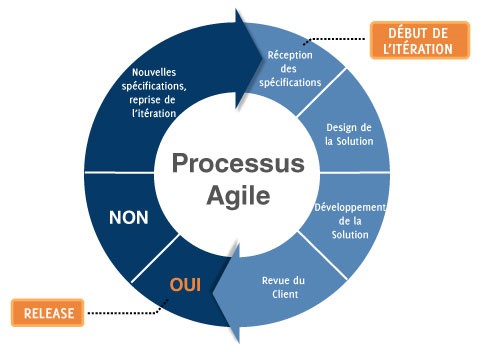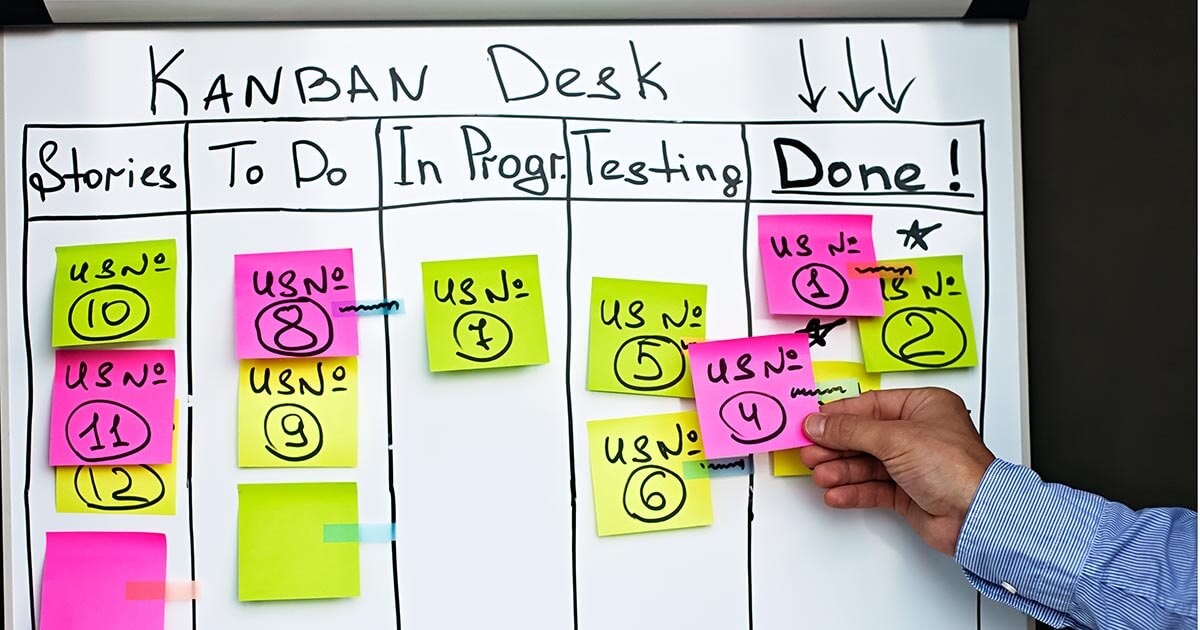


Nissrine Fessikh
11-10-2021 6 min readWhy are brands increasingly adopting the Agile method?
Agile is no longer exclusive to software engineers, today it has a legitimate basis for all types of companies. Why? It helps brands keep things flexible and adaptable in the age of buyer persona-based marketing.
According to the 1st Annual State of Agile Marketing Report, 37% of marketing teams use the Agile process to manage the development and execution of their various content. Another interesting fact is that they often use more than one Agile approach to get the job done.
If you're not familiar with the term "Agile," here's a quick definition:
"It is an approach to development based on the idea that business requirements and solutions evolve through continuous collaboration between management, cross-functional teams, and customers/end-users. The focus is on adaptive planning and execution that encourages innovation, improved delivery times, consistent improvements and keeps projects flexible to adapt quickly to required changes."

If you think about it, being more responsive to marketing trends and customer needs is exactly what brands need to stay relevant and give customers what they want: a unique, tailored shopping experience.
Aside from the reluctance and discomfort that comes with committing to something new, barriers such as lack of knowledge and training on Agile principles keep brands firmly entrenched in the old ways.
Certainly, it can be difficult to commit when you're not sure what will happen on the other side. But, there's a benefit that brands may not realize: teams that practice some form of Agile marketing tactics were "81% more likely to be satisfied with how their department handles work," according to the State of Agile Marketing report.
Why adopting Agile is a win
Whether you're a B2B or B2C, it's no surprise that successful marketing is the key to customer retention and sales. However, as marketing requirements become more complex in terms of scope and execution channels, it's harder to shift gears quickly in a traditional marketing development model. And when brands see poor click-through rates, experience negative customer feedback or need to communicate about a product recall, every second counts.
Here are some things you may not realize about the value of Agile marketing and how it can improve team morale while improving productivity and ultimately sales conversions.
Doing better quality work
Benefits of Agile marketing include a shared vision (end goal, marketing campaign, project), and it is broken down into mini-projects. Team checkpoints are performed daily to keep things flowing, moving forward, and on schedule. A list of backlog items is kept at the forefront to ensure nothing falls through the cracks and provides a place for teams to pull from a to-do list and then add to the development track as needed.
Some teams adopt a Kanban board as part of their workflow practice. This visualization tool uses colored sticky notes on a whiteboard to communicate the status of campaign items, progress, and project issues to facilitate collaboration and ensure that certain teams aren't overloaded during execution.
Overall, these kinds of small efforts result in better collaboration and work.

Identify problems earlier
There's nothing more frustrating than spending a week working on a project only to discover that a critical element won't work or has been missed. The fundamental principle of Agile principles is that consistent and more frequent communication on each step between all team members reveals problems early. Then, problem solving is a group effort to help speed resolution and balance the workload.
Create a faster, more accurate delivery and release cycle
Truncated work cycles are a great side effect of improved communication. Agile marketing is based on the idea of "teamwork makes the dream work" because everyone is focused on achieving reasonable, short-term project goals as a unified team.
To support the collaborative process, teams can leverage pre-designed templates to plan marketing development workflows and execution. When each campaign is laid out using templates, marketers outline key resources, prioritize and keep marketing messages fresh, and clearly understand what needs to happen next in the process to stay on schedule. By removing the burden of creating streamlined workflows, efforts remain agile and consistent.
Improve your ability to stay competitive
In the next year, 61.3% of traditional marketing teams plan to start implementing Agile principles. This makes diving into an Agile methodology more of a must than a differentiator to stay competitive. If taking the first step seems overwhelming, start with a training seminar to familiarize yourself with the different options or to provide basic training to internal teams. Such training has been shown to improve adoption of Agile development integration and offer insight into how brands can customize their approach.
Enjoy simple scalability and flexibility
Sometimes the one-size-fits-all approach just won't work. With Agile marketing, this is no longer a problem. Many marketing teams use a mix of agile approaches to create a customized system tailored to the dynamic marketing work they must manage. As a result, team members can use their creativity and incorporate Agile development principles in an evolutionary way, instead of being locked into a prefabricated system that doesn't always make sense.
Manage changing priorities more effectively
In marketing, adaptability is key. The power of Agile development is that it allows teams to focus on the big picture and break it down into smaller projects. When you take a microcosm view, it's easier to reprioritize as needed. This is an extremely important benefit when teams take a fresh look at what's on the table and can more easily reprioritize while keeping the bottom line in mind.
Fostering innovation and happiness in teams
Everyone is happier when they know what's going on and how individual efforts specifically contribute to the completion and success of a project. At the same time, teams that are clear on the project's purpose - and inconsistent communication - offer something even more powerful: insight and innovative thinking around stumbling blocks. This is especially important for team members who are working on multiple projects simultaneously or who are spread across the globe.
Agile development is also an easy way for team members to improve their skills and knowledge by learning from each other as a close team. Overall, being willing to work as a well-oiled team is what improves adoption and completion rates and moves a project from a personal win to a shared success.
Don't miss any news, subscribe now!
Related articles
Publications recommandées





